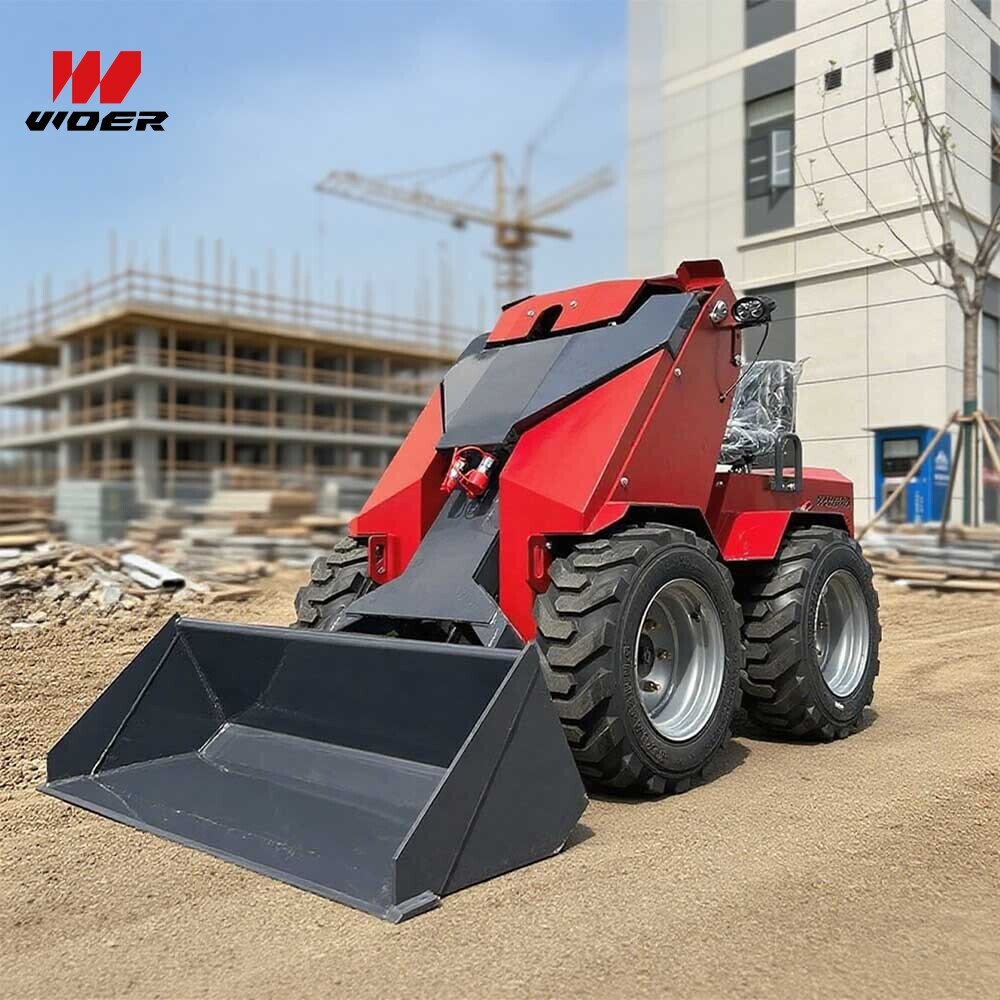Navigation
Contact us
Phone
Message

For buyers evaluating free shipping cheap mini skid steer loader this, understanding track skid loader EPA compliance is essential: emission tiers, engine documentation and procurement checks directly affect operation costs, resale value and project eligibility.
Why EPA compliance matters for buyers
EPA regulations for off-road engines determine which machines can be legally operated in many U.S. jurisdictions and on federally funded projects. A track skid loader EPA-compliant engine reduces the risk of fines, project delays and retrofit costs. For procurement teams and financial approvers, EPA certification directly influences total cost of ownership, insurance exposure and access to government contracts. When assessing a mini skid steer track loader skid steer loader, confirm the engine family and tier designation documented on the OEM plate and in vendor paperwork.
Key regulatory concepts and standards
Most modern compact loaders use diesel engines regulated under EPA Tier standards (Tier 4 Final currently for many new models). Some states have additional requirements—California’s CARB rules, for instance. International standards such as EN emissions or local equivalents may also apply in cross-border operations. Buyers should cross-reference engine datasheets with official EPA certificates and, where relevant, ASTM or ISO standards for exhaust and particulate testing.
Common buyer checklist
Technical evaluation: what operators and technicians must check
Operational staff and technicians should prioritize engine labeling, emission control integrity and onboard diagnostics. A visual inspection includes looking for tampering of emissions hardware, cracked DPF housings, or disconnected SCR dosing lines. Perform a cold-start and warm-up test to observe smoke and exhaust behavior—noncompliant units often produce excessive visible emissions. For accuracy, request recent maintenance logs and regen records; these are essential when considering used mini crawler skid loaders or refurbished mini steer skid loader units.
Performance vs. compliance trade-offs
Some buyers worry that emission controls reduce power or increase maintenance. Modern epa skid steer loader systems are designed to balance emissions with performance; however, DPF regeneration and SCR dosing add scheduled maintenance tasks and occasional parts costs. Evaluate uptime guarantees and warranty coverage for emission components to quantify operational impact. In many cases, fuel efficiency gains and compliance benefits offset incremental service costs over the machine lifecycle.
Procurement guidance for decision-makers and contract managers
Procurement should embed EPA compliance clauses in RFPs: require OEM certification, confirm warranty coverage for emission systems, and include penalties for falsified documentation. For international buyers, ask vendors to demonstrate compliance with both EPA and relevant local standards. When comparing quotes for a mini walk behind skid steer loader or a skid steer loader crawler loader, request line-item costs for emission component service and estimated consumables over five years.
Consider availability of skid steer loader free shipping offers cautiously—confirm whether free shipping applies to compliant models only, and whether delivery timelines will meet project start dates. Where tight deadlines exist, prioritize suppliers with local stocking and service networks to reduce downtime risk.
Cost and financing considerations
Financial approvers need clear TCO models that include compliance-related costs: higher upfront price for Tier 4 Final engines, periodic DPF service, DEF fluid consumption for SCR-equipped units, and potential retrofit expenses for older models. Conversely, compliant machines often attract lower permit costs and broader eligibility for government-funded projects. Leasing structures can mitigate capital outlay while ensuring access to newer, compliant equipment such as mini skid steer diesel crawler loader options.
Operational best practices and safety
Operators should be trained on emission-specific procedures: pre-shift checks of DPF regeneration status, correct DEF handling and storage, and safe procedures for dealing with high-temperature aftertreatment components. Documented training reduces risk of improper maintenance that can void emissions warranties. Also enforce a robust parts and service SLA to ensure emission control faults are remedied promptly.
Case snapshot
A mid-sized sawmill operator replaced a fleet of old loaders with compliant mini skid steer track loader skid steer loader units to qualify for a municipal timber processing grant. The compliance documentation and planned maintenance regime were decisive factors for approval; the operator reported lower permit costs and improved resale value when cycles were rotated.
Common FAQs for buyers
- How do I verify an epa skid steer loader is compliant? Request the engine family approval number, check OEM certificates and inspect emissions hardware.
- Are retrofits available? Some emission retrofits exist, but they must be EPA-approved and can be costly; often replacement is more economical.
- Does compliance affect resale? Yes—compliant machines command higher resale and are easier to sell across regulated regions.
Integration with plant equipment and supply chain
When purchasing equipment for a wood processing line, consider compatibility with existing workflows and handling equipment. For example, pairing a compliant track skid loader with stationary saw equipment can improve throughput. If you’re buying sawmill machinery too, review offerings such as Wood Horizontal Automatic Portable Saw Band Hydraulic Sawmill for Sale to synchronize delivery, installation and training schedules—consolidated sourcing often streamlines compliance documentation and service contracts.
Why choose us / Call to action
We combine regulatory expertise with practical field experience in timber processing and compact loader fleets. For procurement teams and technical evaluators, we offer compliance audits, vendor vetting and lifecycle cost modeling tailored to your operation. Contact our specialists to schedule a compliance review and receive a procurement checklist that matches project specifications and regulatory obligations.
For immediate assistance, request documentation review and a personalized quote—reduce regulatory risk and secure equipment that meets both operational and financial targets.

This stunning beach house property is a true oasis, nestled in a serene coastal community with direct access to the beach.
Contact
West Street, Melbourne Victoria 3000 Australia